In this section, we will explain why driving on winter tires in the summer months is a bad idea. The reasons are quite compelling, and we're sure you'll agree.
There are good reasons why winter tires are so indispensable in winter. They're made from specialized, flexible rubber compounds and feature unique tread designs to deliver the best grip in snowy and icy road conditions. They function at their best in cold temperatures and winter precipitation, providing confidence and security to drivers in potentially hazardous situations.
But while such tires are the undisputed champion when it comes to colder climates, those same features put them at a disadvantage if used in warmer temperatures. A dry road without ice or snow doesn't need tires biting edges to provide traction.
The softer tread of a winter tire wears out a lot quicker on warm tarmac. It’s the rubber compound, which is formulated to stay soft and pliable when temperatures plummet below 7 °C (46 °F).
It’s very effective for mitigating the negative impact of cold temperatures and provides traction in winter conditions.
But if you run a set of winter tires throughout the year, that same flexible tread will wear down more quickly in warmer temperatures. It reduces the service life by as much as 60 percent. There’s a strong chance you’d have to replace them earlier than if you’d simply remove them at the beginning of spring.
Our recommendation for hot weather is to use all-season or summer tires. Summer tires are manufactured with a different blend of rubber designed to withstand higher temperatures. The compounds used in summer tires would soon turn hard and brittle if driven in winter conditions. All-season tires, however, are designed to withstand colder temperatures as well as warm and dry conditions. For drivers, living in regions with mild winter conditions (temperatures rarely drop below freezing), all-season tires can be an alternative. But as already mentioned, it is important to remember that summer and winter tires are specifically tailored to the relevant conditions.
If you are unsure about the right tire choice, please contact your local dealer for personal advice.
If you use winter tires in summer, another thing to know is that you'll end up paying more for fuel.
On warm pavement, the rolling resistance of a winter tire is substantially higher than a summer or all-season tire. That's because the softer rubber compound changes shape more. It leads to higher rolling resistance, which results in an increase in fuel consumption, which means you'll need to visit the gas station more often than necessary.
If you don't switch to all-season or summer tires during warm weather, your car will not have optimal handling capabilities for safety – especially if you're forced to make sudden turns.
Let's imagine a scenario where a driver has to make an emergency maneuver. Winter tires on dry pavement are too soft. The handling won't be as responsive as it should be in a critical situation.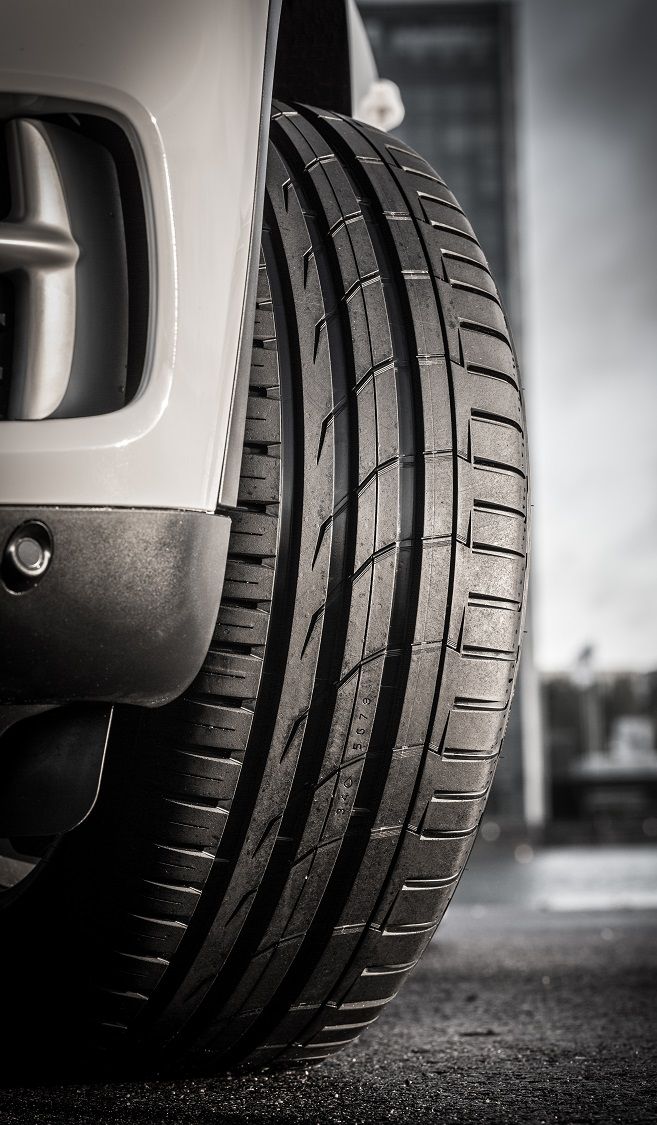 Also, the stopping distance is extended.
Also, the stopping distance is extended.
From a long-term perspective, winter tires which have been left on throughout the spring, summer, and autumn all the way until the next winter will probably have worn tread blocks (because of their softer compound). Winter tires with insufficient tread depth won't provide as much grip or traction on snowy and icy surfaces, which is a decisive factor influencing driving safety.
Dealer Locator
The difficulty of driving in extreme weather depends on the type of tires you use. Your winter tires will wear down faster if exposed to consistent heat.
Winter tires will last on average about 30,000 miles depending on the conditions and vehicle type. When winter tires are exposed to summer weather, they will wear about 60% faster than usual. This means you would reduce the total tread life of your winter tires to about 12,000 miles.
In summer, winter tires wear out quickly because of the way the softer rubber compound reacts to the heat and warm pavement.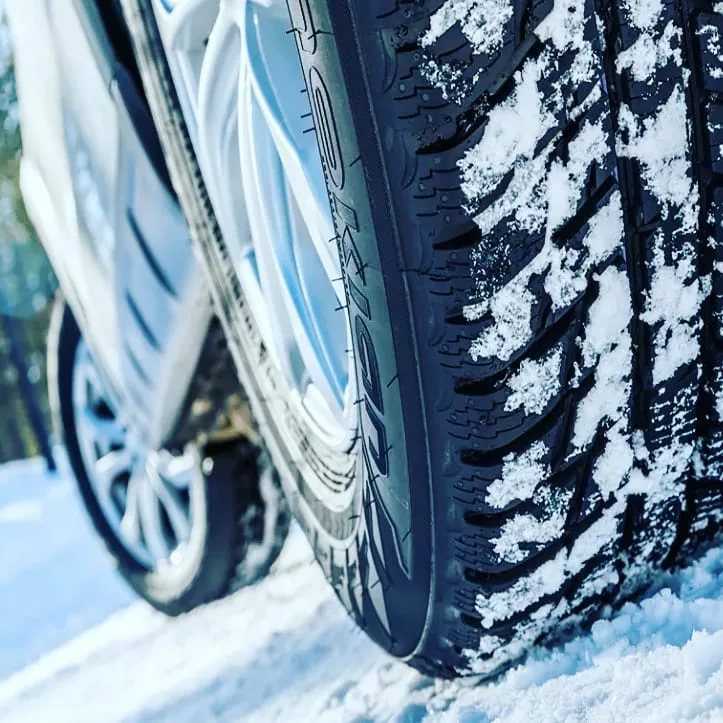 By eliminating exposure, you can ensure you get the maximum life span from your tires. This guide will discuss more about how fast winter tires wear in the summer.
By eliminating exposure, you can ensure you get the maximum life span from your tires. This guide will discuss more about how fast winter tires wear in the summer.
Testing winter tires in the heat can be difficult, but our experts have gathered the research to support these claims. When we drive a winter tire on hot pavement, it loses significant traction and the tread wears down much faster. You should take every precaution in order to make your winter tires last for longer.
Winter tires are very important for everyday use. They perform well on wet roads with ice and snow and should be used during the cold. However, the tread life and performance of winter tires change dramatically in the summer.
They wear up to 60% faster when driven during the summer months compared to those driven during the winter season. It is recommended that drivers change their winter tires before the spring and summer months. They should only be driven during cold temperatures with minimal heat.
The treadwear on winter tires depends on how many miles you drive per month, how often you drive on snow and ice-covered roads, and how often you mix snow with frozen or dry roads.
If you drive a set of winter tires this year, the softer the tread, the faster they will wear out in warmer temperatures. Like all summer tires out of season, winter tires need a lower tread to be effective and safe.
Rapid wear on warm, dry pavement A rubber tread on winter tires is more flexible than summer tires throughout the season. The same thick treads and flexible rubber bolts that give winter tires traction in the colder months cause them to wear faster at higher temperatures.
Winter tires have a softer tread compound designed for winter use, but in hot summer weather, this compound produces a higher amount of heat, which increases the overall thermal load on the tires.
Winter tires are for cold and slippery roads. The rubber is softer, so they are flexible enough to handle the bumps of winter.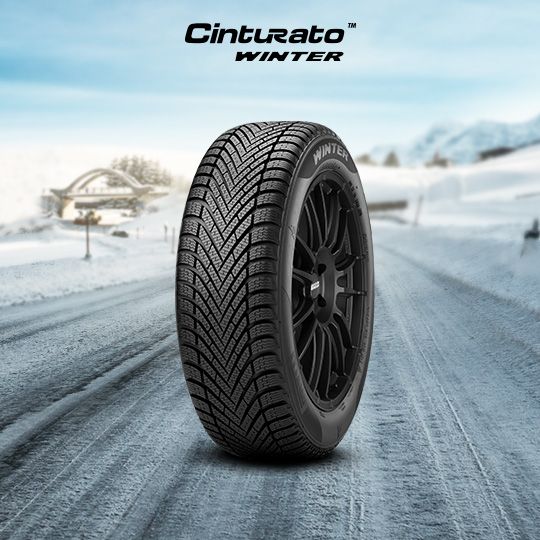 Because of the flexible compound though, they cannot handle the high temperatures that occur in the summer months.
Because of the flexible compound though, they cannot handle the high temperatures that occur in the summer months.
Conventional wisdom is that you should store your winter tires away for the year when the weather reaches temperatures above 45 ° C. However, temperatures in your area change quickly, so it is best to wait until the temperature change remains consistent rather than sporadic changes.
Dry roads and cold weather make the rubber compounds in summer tires harder and they lose grip, which means that they do not work as well.
Leaving winter tires on the ground until temperatures get warmer increases the wear on the compounds, allowing them to remain flexible in freezing temperatures but wear out on warmer roads.
If your vehicle is driving with summer tires out of season and you live in an area where cold temperatures and snow are common, you may have heard sales calls to buy winter tires that work better under these conditions.
Drivers may think it is time to buy a new tire when a tire is flat, but they may not know what type of tire their vehicle is on, whether it is the right fit, or whether it is a seasonal tire that is harder than winter tires, or a summer tire designed for more aggressive driving.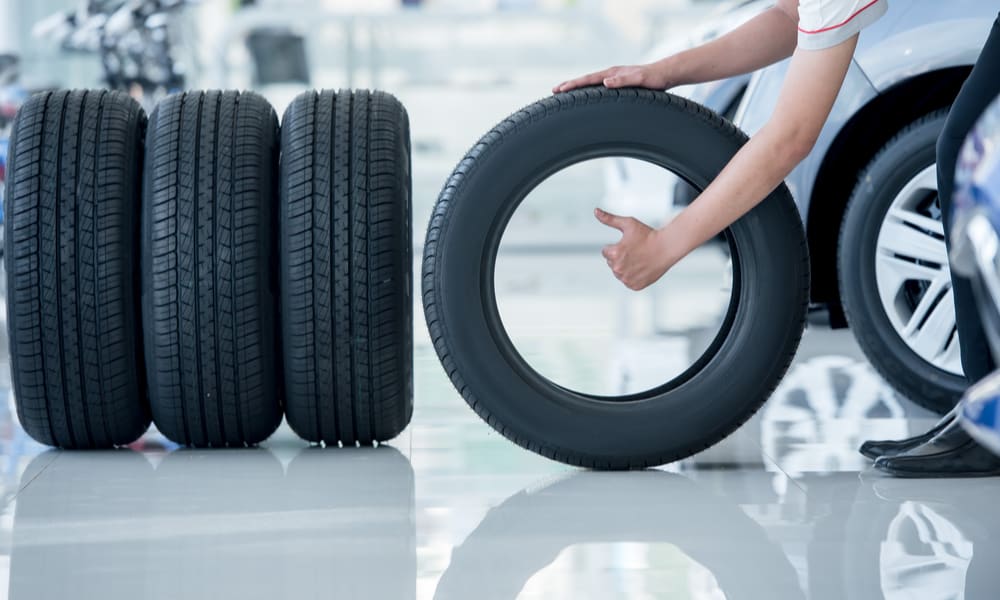
One of the key distinguishing features between the season and the weather is the inclusion of the 3-Peak Mountain Snowflake (3PMSF) symbol which indicates that the tire is certified for winter use.
This means that in areas with winter weather all-weather tires are a good choice all year round, but not in places where it is extremely hot in summer and extremely cold in winter - there is no substitute for fitting suitable tires for these conditions.
If you experience different seasons where you live, winter tires are not an all-year tire that you can use. This is because once the temperature gets too warm your winter tires will start to suffer the consequences.
Winter tires, also called snow tires, offer better traction on snow and ice than summer tires due to the colder temperatures of the season. Winter tires are ideal for a deeper tread depth and special tread designs for snow.
Summer tires are made of a more firm rubber compound mounted on a larger tread block to maximize contact with the road in warmer weather.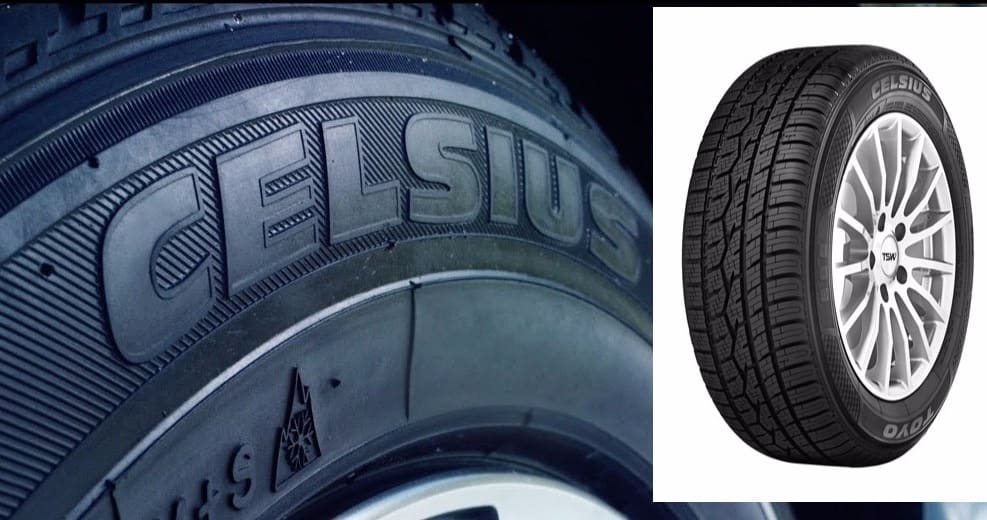 This firm rubber is unable to get flexible enough for the cold, presenting a similar problem that a winter tire faces in the heat.
This firm rubber is unable to get flexible enough for the cold, presenting a similar problem that a winter tire faces in the heat.
It is best to avoid using winter tires all year. They work best in spurts of 3-4 months during cold weather. This will also allow your winter tires to last for at least three total winter seasons too.
Winter tires wear faster in summer because of the differences in insulators and rubber compounds. The difference is why summer tires use a firmer rubber compound that cannot become flexible enough during the cold.
The opposite is true for winter tires. The rubber used in the winter tire construction is extremely soft and designed to become softer as the temperature decreases. This allows for more adjustments on the road and for the grip of your tire to stay reliable on ice and snow.
The temperature increase leads to a loss of traction and makes it easier for the tires to lose grip on the road surface. The warm weather reduces adhesion between rubber and road surface which can lead to tire wear-outs quickly.
The warm weather reduces adhesion between rubber and road surface which can lead to tire wear-outs quickly.
Another issue with winter tires in the summer is the pressure levels. The hot air will cause your tire pressure to expand and this can lead to tire blowouts due to overinflation. Winter tires are typically overinflated to handle the cold but this cannot work the same in the summer.
The best way to avoid wearing out your winter tire too quickly is by avoiding summer temperature at all costs.
When the temperature is high, winter tires lose their grip and cannot handle the conditions. This can be a serious issue for winter tires as they will wear down quickly and become a safety hazard on the road.
In the summer, winter tires will wear much faster. This is because the heat produced by sunlight is higher in summer than in winter, so the tire rubber cannot adjust to the condition changes.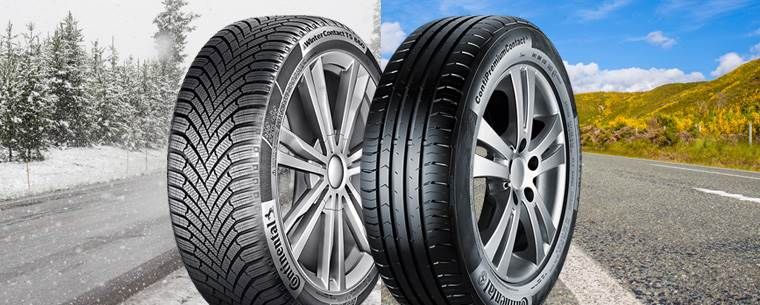
The type of vehicle you drive will also determine how fast this tire wear occurs and it can be even faster on bigger trucks that carry heavier loads. The more weight placed on the soft rubber will only lead to a bigger chance the treads start to crack and wear out.
Winter tires have reduced traction and performance in the summer. It is smart to opt for a different tire choice once temperatures start to warm up because you will notice weakened performance from your vehicle.
The decreased performance will be seen in braking distance, cornering ability, vehicle handling, and overall tire traction. It can become unsafe to use a winter tire for too long in the summer too.
(
Updated:
26/01/2022
)
Contents of the article
Tire manufacturers do not recommend operating a car in summer if winter tires with a stud are installed on it.
Restrictions also apply to models with an all-season kit, the so-called Velcro. Such driving is extremely dangerous, since the rubber does not have the optimal composition to provide a stable grip. Even a cautious trip carries a big risk, as the length of the braking distance increases, maneuverability deteriorates, and steering difficulties appear.
In addition to safety, riding winter tires in summer is unprofitable due to the elastic compound. It wears out quickly at high temperatures, which leads to uneven surface abrasion, cracking, and delamination. Due to the properties of the tires, the modified tread pattern and the depth of the grooves, the rolling resistance changes, and the adhesion to the surface decreases.
Winter tires differ from summer tires in tread pattern and rubber composition. If on models for warm weather large lamellas and longitudinal grooves are used, which are designed to drain water from under the contact patch, then a herringbone pattern is used on tires with a spike. The large “checkered” has special slots that increase traction and handling on snow.
The large “checkered” has special slots that increase traction and handling on snow.
An important difference is the rubber composition. The set for operation in summer has a more rigid base, which tans and loses its properties at negative temperatures. Winter models are characterized by an elastic composition. It holds the road very well and is effective on ice.
Despite the obvious differences between the models, there is an opinion that motorists will not feel the difference when driving on winter tires. However, this is a misconception that has been refuted more than once by tire manufacturers. Comparative tests show that the use of tires out of season affects the handling of the machine. The winter kit loses a lot to the summer models on wet pavement and during emergency braking. Wet coating and soft tread friction tires are incompatible, since this combination seriously reduces the stability of the car.
If you do not change winter tires for seasonal tires in summer, there is a high risk of encountering the following problems:
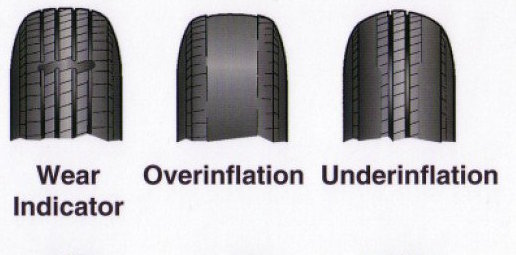
Summer Drive Protection Sound Comfort
Rating:
4.5
Tires Goodyear Eagle F1 Asymmetric 3 SUV
Summer Drive protection
Rating:
5
Tires Goodyear Eagle F1 SuperSport
Summer Drive protection
Tires Goodyear Eagle F1 SuperSport RS
Summer
Rating:
4.5
Tires Goodyear Eagle Sport
Summer Drive protection
Rating:
4.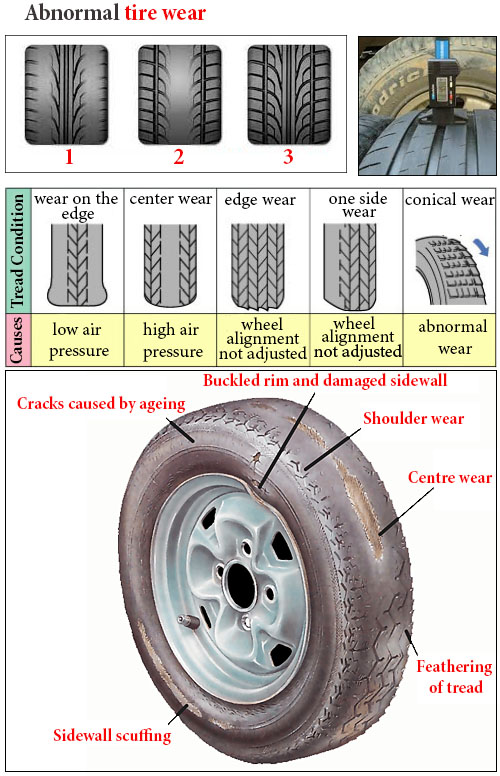 5
5
Tires Goodyear Eagle Sport TZ
Summer Drive Protection Run On Flat
Rating:
4.5
Tires Goodyear EfficientGrip Performance
Summer Drive Protection Run On Flat
Rating:
4
Tires Goodyear Wrangler HP All Weather
Summer Drive protection
Rating:
4.5
Tires Goodyear EfficientGrip SUV
Today there is no law that would regulate the right to use Velcro, studded tires or all season wheels in summer.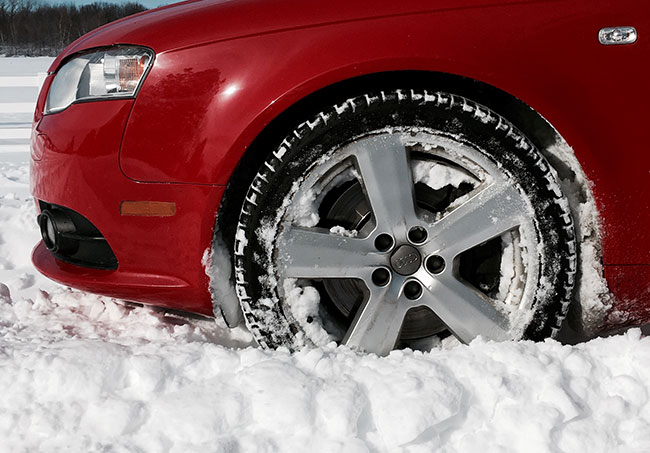 There are some amendments that make it difficult to operate the car. According to them, it is allowed by law to drive in the summer on rubber with a tread height of at least 1.6 mm. For winter tires, there is a 4 mm limit. Therefore, if the driver decides to roll a worn out friction kit without spikes in the summer, he needs to monitor the rest of the tread. There is a penalty for breaking the rule.
There are some amendments that make it difficult to operate the car. According to them, it is allowed by law to drive in the summer on rubber with a tread height of at least 1.6 mm. For winter tires, there is a 4 mm limit. Therefore, if the driver decides to roll a worn out friction kit without spikes in the summer, he needs to monitor the rest of the tread. There is a penalty for breaking the rule.
Although Russian legislation does not directly prohibit the use of friction tires in summer, the Customs Union strictly regulates this rule. According to the technical regulations, drivers are not allowed to drive on off-season tires. The Customs Union has established summer and winter periods during which tires that violate the requirement cannot be used. The document says that in the summer you can drive on regular tires from June to August, and on winter tires from December to February.
Technical regulations are valid throughout Russia, so you need to decide which tires to use based on these rules.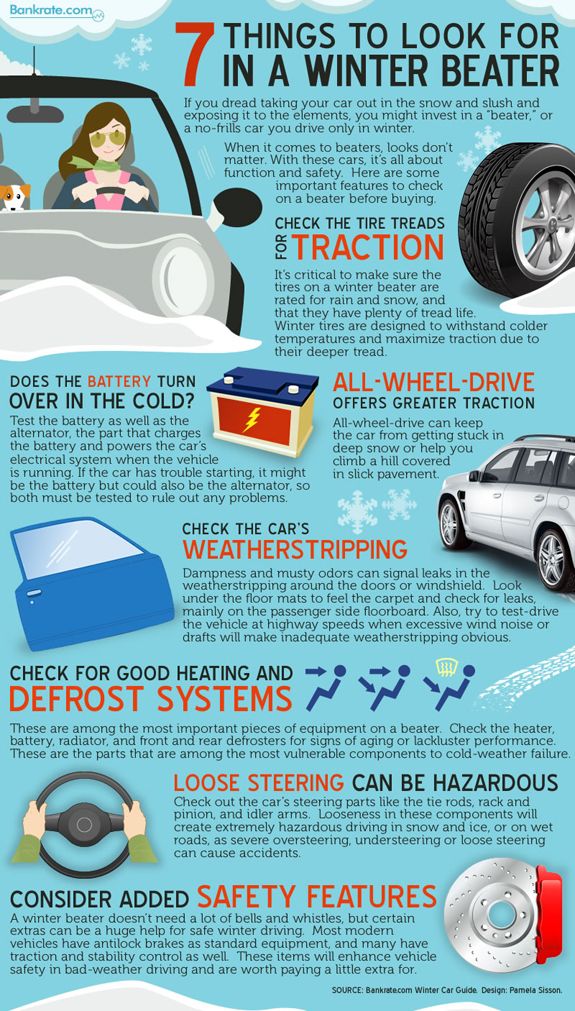 Keep in mind that the timing of the onset of the seasons in different regions is different.
Keep in mind that the timing of the onset of the seasons in different regions is different.
There are many negative consequences that appear if you use a car with off-season tires. Let's consider them in more detail:

Since the use of studded wheels in the summer leads to difficulties in driving, affects traffic safety and affects the effectiveness of the braking system, this practice should be abandoned. In addition, in addition to the safety of other road users, the maintenance of the car is increasing due to increased fuel consumption and regular fines.
Find Goodyear tires for your car
Can winter tires be used in summer?
When the weather turns hot in summer, both temperature and road conditions change. And although it seems quite logical to change the tires on the car when the season changes, not all drivers have time to do it on time. Moreover, some believe that winter tires from European manufacturers are designed for the "European winter", which is supposedly soft, so that such tires can be used in Russia in the summer. Is this really true and what is the potential cost of a mistake?
Moreover, some believe that winter tires from European manufacturers are designed for the "European winter", which is supposedly soft, so that such tires can be used in Russia in the summer. Is this really true and what is the potential cost of a mistake?
How a winter tire differs from a summer tire
The differences are primarily due to the different conditions in which winter and summer tires operate, when it is required to provide maximum grip and driving stability, based on temperature and asphalt conditions. Therefore, there are differences in the production technology of winter and summer tires. An all-season tyre, which occupies an intermediate position between a summer and a winter tire, however, in the heat, it does not perform as well as a summer tire, and in a cold, not as well as a winter one. Thus, a pneumatic tire is a winter tire if the design of the tire, the rubber compounds used in its production, and the tread pattern are specially designed to guarantee increased grip on icy and snow-covered surfaces compared to a conventional summer tire.
Winter tires must be marked with the symbols "M+S" or "M&S" or "M·S". The manufacturer of a winter tire, in addition to this mandatory marking, may apply an additional marking in the form of a snowflake against the background of a three-headed mountain peak:. This marking indicates that the winter tire is suitable for operation in severe winter conditions, including dense and packed snow, which is confirmed by the high results of special test tests. Tires with such a pictogram are usually considered real winter tires. The designation “M + S” on tires literally translates as “mud and snow”. The developers of such tires sought to improve the performance of such tires when driving on mud, freshly fallen or beginning to melt snow. Many all-season tires can carry this label, but not all that have it are tested as tires for severe winter conditions. So, a real winter tire always has the “M + S” marking and the snowflake icon against the background of three mountain peaks at the same time.
Differences in the rubber composition of winter and summer tires
In the manufacture of various elements of the tire, rubber compounds of different properties and purpose are used.
Compounds for winter tires must be such that the structural elements of winter tires retain their performance to the maximum extent in the temperature range characteristic of a particular climatic zone. Usually the range from positive 5 - 10°C to negative 40 - 45°C is implied. Unlike winter tires, the rubber compounds of summer tires must ensure the effective functioning of the tire at positive temperatures, up to 50 - 55°C. At a positive temperature close to 0°C, the functional characteristics of the rubber compounds of a summer tire noticeably decrease, and at negative temperatures they deteriorate sharply, which makes it very dangerous to use a summer tire in winter at a negative temperature.
Differences in tread pattern
Winter tires have a tread adapted to winter conditions.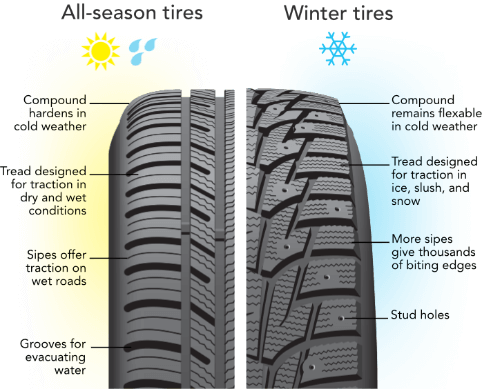 It is deeper, its elements are larger, the structure itself is more sparse. Numerous lamellas (narrow sipes, the width of which is 5-10 times less than the width of the other tread grooves), oriented in different directions, increase the controllability and braking efficiency of the car on snow and ice, as well as increase the grip of the tire on the winter road and the braking efficiency of the car . Winter tire tread grooves are usually wider and deeper than summer tire tread grooves. Unlike a summer tire, the tread pattern of a winter tire should provide not only effective water drainage, but also the removal of a mixture of snow and water (snow-water sludge) from the contact patch of a winter tire with the road. In addition, the tread of some winter tires can be equipped with anti-skid studs, which provide increased grip on ice and packed snow. For any tire, the norm of the residual tread depth is set by law, upon reaching which the tire must be removed from service. The tire manufacturer must provide for the presence in the tread pattern of indicators that the tread wear limit has been reached, which help the driver to understand in a timely manner that the tread depth is the minimum permissible and the operation of such a tire should be immediately discontinued.
It is deeper, its elements are larger, the structure itself is more sparse. Numerous lamellas (narrow sipes, the width of which is 5-10 times less than the width of the other tread grooves), oriented in different directions, increase the controllability and braking efficiency of the car on snow and ice, as well as increase the grip of the tire on the winter road and the braking efficiency of the car . Winter tire tread grooves are usually wider and deeper than summer tire tread grooves. Unlike a summer tire, the tread pattern of a winter tire should provide not only effective water drainage, but also the removal of a mixture of snow and water (snow-water sludge) from the contact patch of a winter tire with the road. In addition, the tread of some winter tires can be equipped with anti-skid studs, which provide increased grip on ice and packed snow. For any tire, the norm of the residual tread depth is set by law, upon reaching which the tire must be removed from service. The tire manufacturer must provide for the presence in the tread pattern of indicators that the tread wear limit has been reached, which help the driver to understand in a timely manner that the tread depth is the minimum permissible and the operation of such a tire should be immediately discontinued.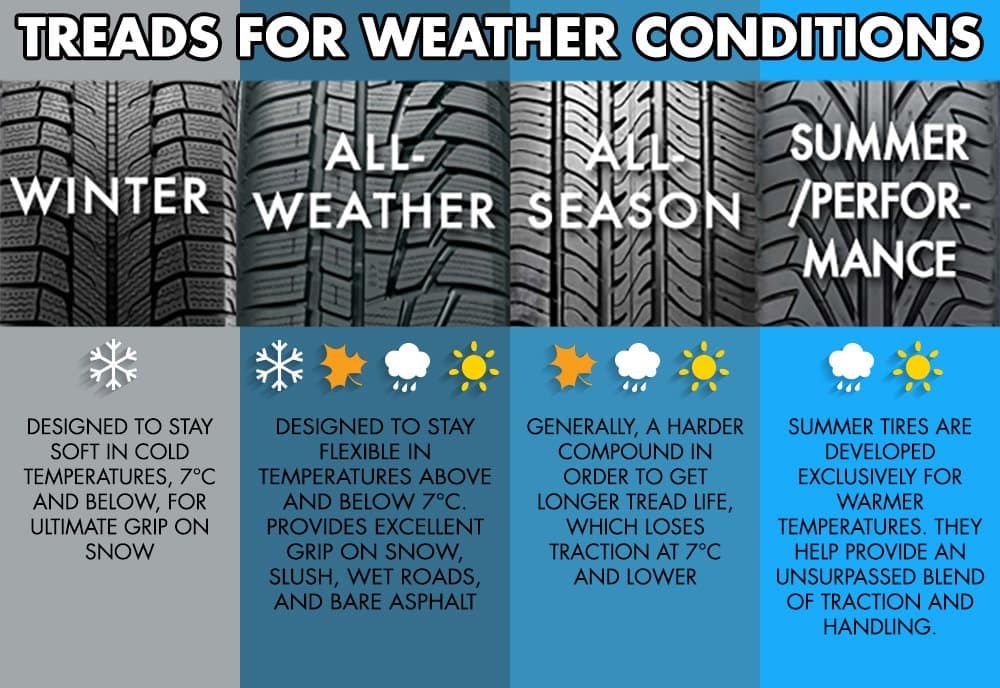 For a winter passenger tire that is operated on an icy or snowy road surface, this rate is 4 millimeters.
For a winter passenger tire that is operated on an icy or snowy road surface, this rate is 4 millimeters.
The tread pattern of a summer tire is designed taking into account the specifics of tire operation in summer conditions, usually these are good roads, high speeds, increased requirements for driving comfort, efficiency and mileage of a summer tire, and safety on wet roads. The number of sipes in the tread pattern of a summer tire is significantly less than that of a winter tire. The summer tire tread cannot be equipped with anti-skid studs. For a summer passenger tire, the legally established norm for the residual tread depth, upon reaching which the summer tire must be taken out of service, is 1.6 mm.
Effects of using a winter tire in summer
Winter tires have improved grip on snowy and icy roads. If you use winter tires on dry road surfaces, you may encounter a deterioration in vehicle handling, an increase in braking distances, an increased risk of aquaplaning, excessive heat generation in the tire, faster wear of the tread part of the winter tire, and a rather high level of noise generated by the tire.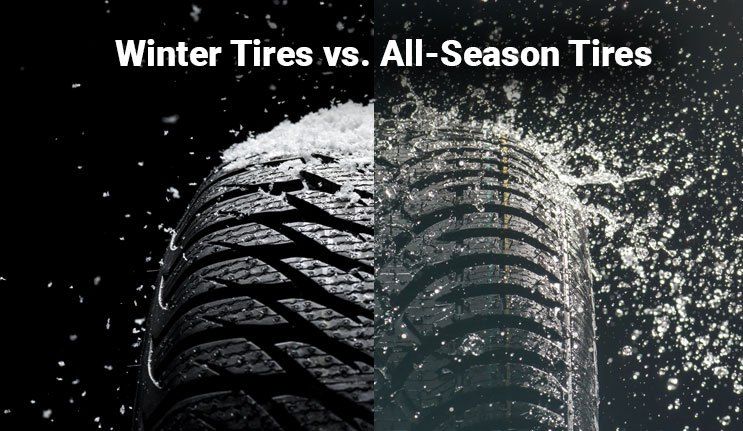 Winter studded tires destroy dry pavement with their studs, thereby causing harm not only to the road itself, but also to the environment. Winter tires are usually heavier than summer tires of similar size, the groove depth and saturation of the sipes in the tread pattern are greater, which leads to the deterioration of such an important tire property as fuel efficiency for motorists.
Winter studded tires destroy dry pavement with their studs, thereby causing harm not only to the road itself, but also to the environment. Winter tires are usually heavier than summer tires of similar size, the groove depth and saturation of the sipes in the tread pattern are greater, which leads to the deterioration of such an important tire property as fuel efficiency for motorists.
The time when it is necessary to change tires
As for the procedure for the use of winter tires, it is defined in the technical regulation of the Customs Union "On the safety of wheeled vehicles" (abbreviated as TR CU), which was approved by the Commission of the Customs Union in 2011, and entered into effect in January 2015.
In particular, the TR CU establishes that in the winter period (December, January, February) it is forbidden to operate vehicles that are not equipped with winter tires, but in the summer period (June, July, August) it is forbidden to operate vehicles equipped with winter tires.